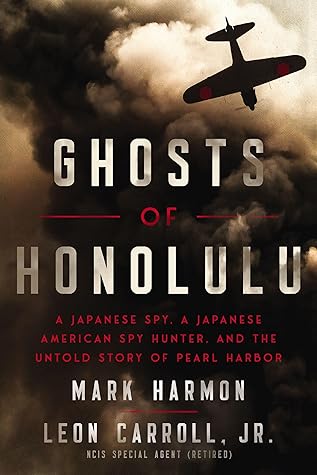More on this book
Community
Kindle Notes & Highlights
by
Mark Harmon
Read between
May 7 - May 13, 2025
Ringle’s time in California has validated what he found in Hawaii. He reports officially in 1941 that “better than 90 percent of the Nisei and 75 percent of the original immigrants are completely loyal to the United States.”
Mikami and Yoshikawa are confident to the point of recklessness. The driver once drives through the gates of Fort Shafter, the command headquarters of the US Army in Hawaii. They stroll around innocently before being asked to leave, which they do without giving any identification.
Nearly every consulate support worker is seized, including Richard Kotoshirodo and John Mikami. (Of more than two hundred seized, only these two are actually guilty of abetting espionage.) Also detained are the Japanese language school teachers and religious leaders from Shinto shrines and Buddhist temples. Members of mainstream Japanese civic societies are hustled into cars and ferried away from their families.
“What if I were to send a wireless back to Washington, telling them to recruit these available Nisei soldiers to work in the European area?” “Fighting Germans?” “Fighting for their country,” Coggins retorts. “In the Pacific area they’ll be mistaken by Marines and shot to hell.”
In February 1943 the Army created the 442nd Regimental Combat Team and solicited volunteers. The initial goal was three thousand enlistees from the continental US and 1,500 from Hawaii. More than ten thousand Nisei men volunteered from Hawaii. Barely one thousand volunteered from the US West Coast states—universal detention clearly dampened enthusiasm in the mainland. In Hawaii, 2,686 were accepted to the 442nd.


